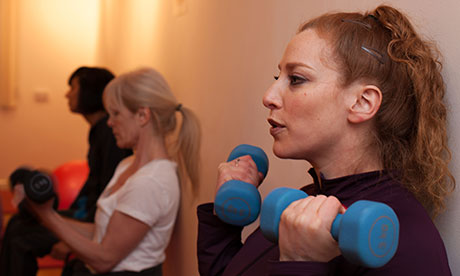
It's hardly surprising that Shana Pezaro started comfort eating. After 20 years of unexplained and debilitating symptoms, she had just been diagnosed with multiple sclerosis. Having built up her own stage-school business, she was now losing the ability to walk and was forced to sell up. Then her marriage fell apart.
"My husband had found my illness and disability very difficult to deal with, but we always thought I was going to get better," says Pezaro. "Then, when I was finally diagnosed with MS in 2007 and we realised I wouldn't, he just couldn't handle it. I used to be a dancer, but my body had changed and he told me he just couldn't find me attractive anymore. Within a year of my diagnosis, we'd split up."
It was a relief, she says, when he finally left, but the experience nevertheless dealt a blow to her self-esteem, not helped by the fact she had started to put on weight.
"I went from 12st to 15st in the space of three years. The fatigue was so bad that I didn't have the strength to cook. I was living on microwave meals and snacks. The steroids and other medications made me incredibly hungry. And of course as my legs got worse I was getting less and less exercise – I could barely walk. I was miserable."
Weight gain is a serious issue for the disabled community. In a study of 30,000 people published this summer by the University of Texas School of Public Health, 42% of adults with a disability were reported as obese, compared with 29% of those without a disability. Gaining weight not only affects a person's emotional wellbeing, but can also make mobility even harder and symptoms feel worse. Yet fatigue and pain can make sport participation seem daunting. And although things are improving following the success of the Paralympics, access remains a major barrier. Just 18% of people with a disability or long-term limiting illness participate in sport each week, around half the level of the general population, according to a survey by Sport England.
"You don't have to eat a lot to put on weight if you're not moving and your body isn't burning calories," says Vanessa Daobri, a gym instructor who specialises in working with people with disabilities. "Disabled people often suffer because they don't know how to exercise. If the disability is a result of an injury or it's been a slow onset, they may find it hard to accept that they can't do a sport in the way they used to, so they feel there's no point."
Organisations such as Aspire and the English Federation of Disability Sport run inclusive gyms across the country. But not everyone is lucky enough to be near one, and regular gyms are still lagging behind, says Daobri. "Often the staff get the approach wrong – sometimes it's just laziness, sometimes it's ignorance. Health and safety is used as a crutch, too." Another issue, she says, is that disabled people can feel frightened to be seen going to the gym in case their benefits are cut.
Daobri has Ehlers-Danlos syndrome, a disorder affecting collagen. In 2007 she grew from a size 12 to a size 24 in less than a year. She felt "stuck", until she joined a wheelchair racing group and the coach asked her if she used the gym.
"I just laughed," she says. 'I thought gyms were not for me – they were for other people." She was shown how to use gym equipment in new ways and quickly became "addicted" to exercise. Now, she has made a career out of helping disabled people find ways to get fit.
"Once someone opened the door for me I realised there was a whole world out there," she says. "Whatever your disability, there's a version of a sport for you – you just have to be a bit creative."
After six months of post-divorce counselling, Pezaro decided she wanted to lose weight. "I got a brilliant new carer who got me eating healthily," she says. "Then I found out there was an MS treatment centre near me that runs lots of different exercise classes."
She signed up to a class she has come to describe affectionately as "sadistic PE". "The instructor is ex-military but also a counsellor and herself has MS. So she completely understands us, but she doesn't let us get away with anything. We adapt everything to our own personal needs. It's not your average fitness class – it's not unusual for people to collapse and have a leg spasm in the middle of their situps, or to suddenly fall off their exercise ball, but we just laugh about it."
At first Pezaro was unable to do most of the exercises, but she persevered and since starting the class three years ago has lost nearly 4st.
"It's not been easy," she says. "It took me 30 months to lose 45 pounds. But I didn't get demoralised. I knew that over the years it would add up. And the more I've exercised the better my fatigue is. I still can't walk, but I now have less weight to lift when I'm using my frame, or getting on and off the toilet, so everything is easier."
Pezaro's confidence has been transformed and now she is enjoying dating again. But perhaps most the important gain has been to her sense of control.
"I really worked myself at last night's class, and today every muscle in my body hurts," she says. "But I'm so used to living with pain, it's kind of nice to know that for once, things are hurting for a good reason."
• For information and support on multiple sclerosis visit mssociety.org.uk. Aspire's Instructability programme offers free fitness industry training to disabled people. Visit aspire.org.uk

